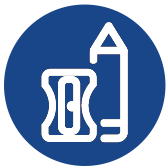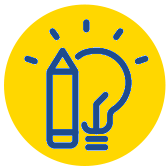IMPACT
Washington State Profile
Washington STEM
Seattle, WA
Career Connect Washington
Seattle, WA
Office of Superintendent of Public Instruction
Olympia, WA
Office of Washington State Governor
Olympia, WA
Steward Leaders
Richland, WA
Washington Student Achievement Council (WSAC)
Olympia, WA
Workforce Central (representing statewide local workforce boards)
Tacoma, WA
Richland School District
Richland, WA
State Board of Career and Technical Colleges (SBCTC)
Olympia, WA
State Board of Education
Olympia, WA
Tacoma Public Schools
Tacoma, WA
Washington Roundtable
Seattle, WA
Washington State School Directors’ Association (WSSDA)
Olympia, WA
Educational and Workforce Landscape
Secondary K–12
Governed by:
Office of Superintendent of Public Instruction (OSPI)
Public school enrollment K–12:
1,091,429
School Districts: 268
Public school enrollment 9–12:
347,547
Graduation rate: 82%
Postsecondary
State Agency:
Washington Student Achievement Council
Enrollment/Completion Data:
- 49% of WA HS students enroll in postsecondary within one year of graduation
- 38% of WA HS students complete postsecondary within 8 years.
Number by Type of Schools
- 2-year Public Community and Technical Colleges: 34
- 2-year Private Career Colleges for Profit: 8
- 4-year Public University: 6
- 4-year Private University: 19
- Tribal Colleges: 1
Workforce
Partners in the work:
- Career Connect Washington Initiative
- Workforce Training Board
- Washington Roundtable
Top Industries/Jobs:
- Advanced Manufacturing/Aerospace
- Clean Technology & Energy
- Construction
- Healthcare
- Life Sciences
- Maritime
Job Openings to Worker Ratio:
Annual projected job openings: 445k jobs total, 176k of those entry-level and pay a family-sustaining wage.
Points of Interest
Washington Student Achievement Council is a student centric state agency driving postsecondary attainment for the state with Council membership spanning K-12, 2- and 4-year sectors, students and citizen members.
The Washington College Grant is one of the most generous need-based financial aid programs in the country!
College & Career Pathways Successes
Washington Student Achievement Council (WSAC) supports place-based regional partnerships through the Regional Challenge Grant program which funds partnerships that must include a community-based organization along with a K-12 and higher education partner to test innovative strategies informed by the community to increase postsecondary enrollment and completion.
In 2019, HB 2158 established the Washington College Grant (WCG) which is the largest state financial aid program. For resident students from low and middle income families, this entitlement covers tuition at public 2 and 4 year colleges and universities and many private not-for-profit institutions and other certificate and apprenticeship programs as well. This need based aid is calculated based on income, family size and program enrolled in. In 2021, HB1835 provided additional funding to increase awareness of the WCG through a statewide targeted marketing campaign.
A unique systemic approach being tested in WA is to allow students who participate in some public benefits programs to automatically give them access to the Washington College Grant, thereby ensuring the student gets access to financial aid and can delay filling out the application once enrolled. WSAC is looking to expand this to bigger public benefits programs like SNAP.
In 2017, the Governor of Washington created the Career Connect Washington taskforce to develop strategies for expanding career connected learning for all students in Washington.
In 2022, Washington STEM authored and helped pass legislation HB 1867 Concerning dual credit program data.
The Washington State Opportunity Scholarship (WSOS) provides additional scholarships to low and middle income students pursuing professional-technical degrees and bachelor’s degrees in high demand STEM fields. WSOS is a public-private partnership in which the state matches private contributions to fund the scholarship.
Washington STEM has joined forces with staff, students, and families to help identify barriers and opportunities to college and career readiness supports — like dual credit, financial aid, and more. Read our new High School to Postsecondary report to learn more. High school to Postsecondary: Technical report
The Washington Jobs Initiative (WJI) will help more Washington residents access industry-driven training to secure a good job with a family sustaining wage. More than 70 percent of jobs created in Washington State need a postsecondary credential, but only about 40 percent of young people currently have one.
WJI was created to help more students pursue good-paying jobs after high school by enrolling in registered apprenticeships and technical training programs. The initiative is supported by a $23.5 million Good Jobs Challenge grant from the U.S. Department of Commerce’s Economic Development Administration.
Goals and Priorities for Launch
Washington has made significant strides in establishing pathways that offer students exclusive opportunities for career-connected learning experiences, ultimately expanding their access to post-secondary education and workforce prospects that lead to sustainable incomes. Several statewide initiatives have boosted funding opportunities for program development and pathway alignment, particularly within workforce development, Career and Technical Education (CTE) colleges, K-12 CTE programs, and collective impact projects such as Career Connect Washington and the Washington Jobs Initiative (Good Jobs Challenge).
While the state continues to prioritize and strengthen pathway initiatives, there remains a disparity in program accessibility and implementation at the local level when these state-level programs and initiatives are introduced. The LAUNCH initiative provides an avenue for testing innovative strategies and solutions to address these issues and bridge the gaps, thereby enabling more scalable changes at the systemic level.
Local-level teams have been thoughtfully assembled to reflect the state’s diversity. Specifically, we have selected three districts to participate in this learning community, each representing different regions and characteristics of the state. Tacoma School District, being one of the most racially diverse and large districts, brings valuable perspectives around racial disparities. Elma School District, a small rural district, represents the unique challenges of rural communities. Richland School District, a suburban district in eastern Washington, showcases the economic and political complexities distinct from the west side of the state. These districts are led by innovative thinkers committed to equity and expanding viable pathways and opportunities for their students. Each local-level team consists of the Superintendent, CTE Director, and a local school board member.
During the initial phase of the LAUNCH cohort, these local teams will identify existing partnership opportunities and ways to provide evidence of best practices and local-level needs. Their goal is to inform state-level decisions and close the gap in equitable pathway access for students. Subsequently, we will engage state agency partners who prioritize this work and can utilize the local-level perspective to shape policy and practice.
We believe that the LAUNCH initiative will enable us to elevate this distinctive local level approach, fostering authentic partnerships to inform state policy and practice, and enhancing engagement and alignment among the state’s robust career pathway resources.
Local District Profiles
Elma School District
Urbanacity (enrollment, geography, demographics):
1,582 Students
Small Rural
Home – Elma School District 68 (eagles.edu)
The Elma School District envisions a future where every Elma Eagle takes flight, equipped with the knowledge, skills, and resilience to navigate their unique journeys, contribute meaningfully to their communities, and embrace opportunities that await.
Richland School District
Urbanacity (enrollment, geography, demographics):
14,031 Students
Eastside, suburban
Richland School District (rsd.edu)
Richland School District will educate and develop students who learn from the past, listen in the present and lead our future; meet all students’ individual needs; and cultivate knowledge, skills and abilities in order to maximize student potential so they meet their goals
Tacoma Public Schools
Urbanacity (enrollment, geography, demographics):
28,777 Students
Large Urban
Tacoma Public Schools (tacomaschools.org)
Tacoma public schools in partnership with parents and community, we will provide a comprehensive educational experience that is rigorous, individualized and enables students to contribute to a changing and diverse world.
References
- Career Connect Washington Home | Career Connect Washington
- Washington STEM Home Page – Washington STEM Washington State
- Achievement Council Home | WSAC (wa.gov)

 Impact Site
Impact Site Innovation Site
Innovation Site